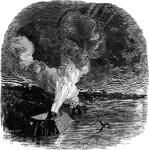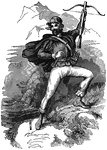Clipart tagged: ‘Alps’

Apollo Butterfly
"The Apollo butterfly, P. Apollo, is found in the damp meadows of the high Alps; the wings…

Castle of Hohenzollern
The ancestral home of Conrad of Hohenzollern and the third castle constructed on the site. The castle…

Herdsman of the Alps
"The herdsman of the Alps leads a life peculiar to his race and land."-Lupton The Alps are located in…

Bombardment of Island No. 10
"Bombardment of Island No. 10 and the fortifications opposite, on the Kentucky Shore, by the Federal…

Siege of Island
"Siege of Island No. 10, on the Mississippi River- night bombardment by the Federal mortar boats, ten…
!["Although the characteristics of this class of buildings are generally uniform, yet shades of difference occur here or there. These deviations are perceptible in the various countries where wooden houses are met with, and are found even in the different cantons of Switzerland. It would, however, carry us too far to enter more fully into various points of difference. [This image] exhibits a characteristic example of one of these Swiss-cottages or chalets."](https://etc.usf.edu/clipart/73800/73803/73803_swiss_house_mth.gif)
Swiss House in the Canton of Berne, Iseltwald
"Although the characteristics of this class of buildings are generally uniform, yet shades of difference…

William Tell
William Tell was known as an expert marksman with the crossbow. At the time, Habsburg emperors were…

